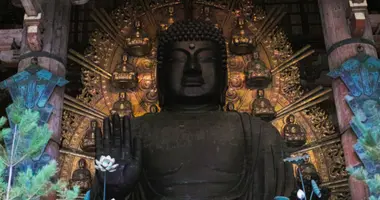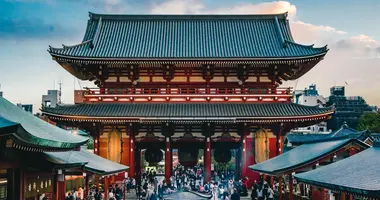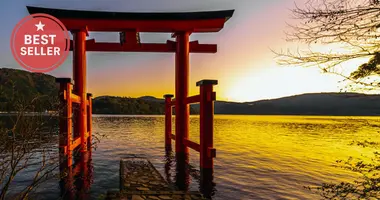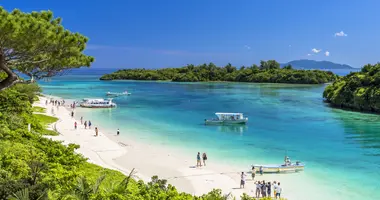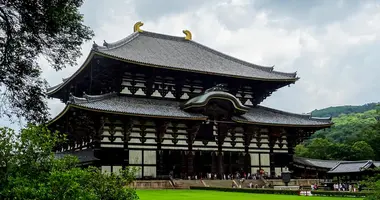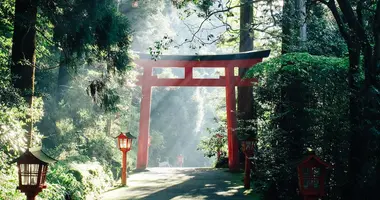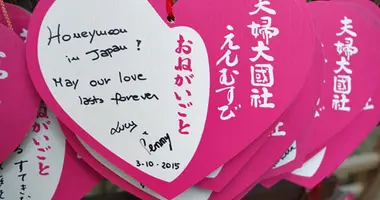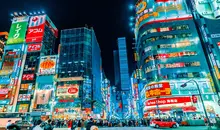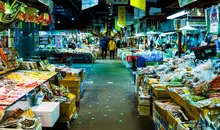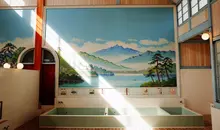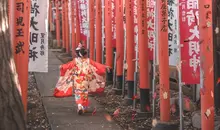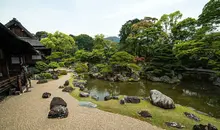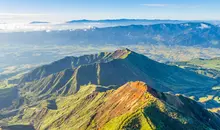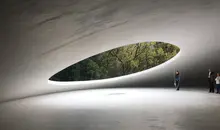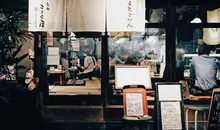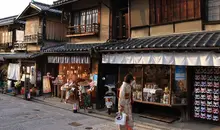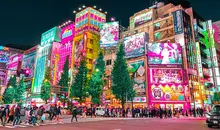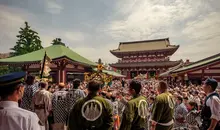Horyuji Temple: The World's Oldest Wooden Buddhist Structures
- Published on : 12/02/2024
- by : Japan Experience
- Youtube
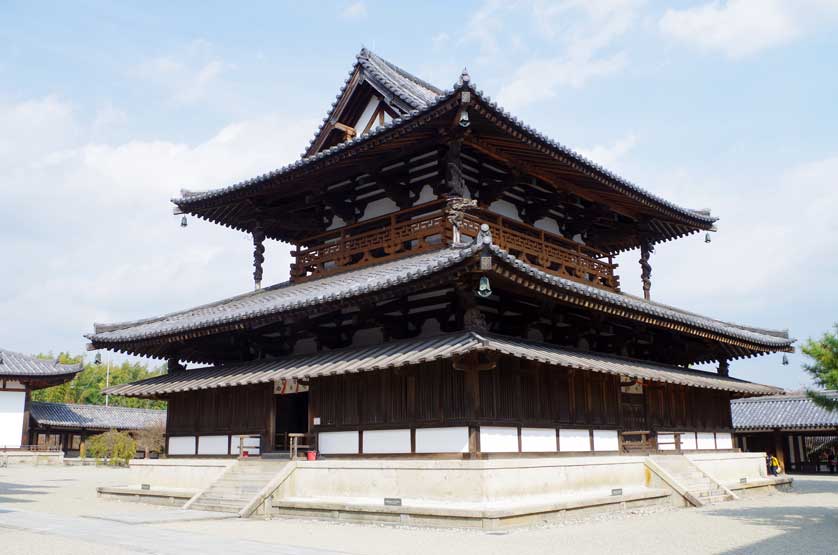
Located in the tranquil city of Nara, Horyuji Temple is one of Japan's oldest temples and a UNESCO World Heritage Site. This ancient temple complex contains the world's oldest surviving wooden structures, some dating back to the late 7th century during the Asuka Period. Founded in 607 by Prince Shotoku, an influential regent who promoted Japanese Buddhism, Horyuji offers visitors a glimpse into the origins of Buddhist architecture and culture in Japan.
The Fascinating History and Legends of Horyuji
Horyuji Temple was founded by Prince Shotoku in 607 CE to fulfill a vow made by his father, Emperor Yomei, to build a temple and Buddha statue as a prayer for recovery from illness. Tragically, the emperor passed away before the temple's completion, but Empress Suiko and Prince Shotoku carried out his dying wish. The temple was originally dedicated to Yakushi Nyorai, the Buddha of healing. Although Horyuji was devastated by a fire in 670 CE, the temple complex was quickly reconstructed and completed by the early 8th century. Some historians debate whether the fire actually occurred. Regardless, Horyuji has been faithfully observing Buddhist traditionsestablished by Prince Shotoku for 14 centuries, making it a testament to his profound influence on Japanese Buddhism.
Prince Shotoku is a revered figure in Japanese history, known for his wisdom and progressive reforms that helped shape early Japanese society. Legendary tales attribute many miracles and abilities to him, such as being able to speak from birth and giving audiences to ten men simultaneously. More concretely, he is credited with establishing Japan's first constitution in 604 CE, centralizing the government, and sending official embassies to China to strengthen cultural ties and knowledge exchange.
Exploring the Temple Grounds: Western and Eastern Precincts
Horyuji's spacious temple grounds span 187,000 square meters and are divided into two main areas - the Western Precinct (Saiin Garan) and Eastern Precinct (Toin Garan). Upon entering the temple via the Southern Great Gate (Nandaimon), visitors first encounter the Western Precinct. This area is centered around the five-storied pagoda and Main Hall (Kondo), along with other significant structures like the Central Gate (Chumon), a lecture hall, and a covered corridor connecting the buildings.
A short walk east leads to the slightly later Eastern Precinct, arranged around the octagonal Hall of Dreams (Yumedono). This hall is dedicated to Prince Shotoku and was built on the former site of his palace in 739 CE to help put his spirit at ease. Between the two precincts stands the Gallery of Temple Treasures, a modern facility housing an impressive collection of Buddhist artwork and artifacts.
The Asuka-Era Architecture: World's Oldest Wooden Buildings
Horyuji is renowned for its ancient wooden architecture, with the Western Precinct containing several of the world's oldest surviving wooden structures. The central pillar of the five-storied pagoda is estimated to have been felled in 594 CE, making it one of the most ancient wooden architectural elements still in existence. The pagoda gracefully rises 32.45 meters (122 feet) and houses clay statues from the 8th century. Beside the pagoda stands the Main Hall (Kondo), a two-story building that is considered the world's oldest wooden building. It features a tiled hip-and-gable roof and entasis columns - techniques developed to create an imposing yet elegant appearance and provide stability.
These masterpieces of wooden architecture showcase the unique blend of Japanese, Chinese and Korean influences during the Asuka Period. They also highlight the incredible skill and precision of ancient Japanese carpenters, who used sophisticated techniques to build resilient structures that have withstood centuries of weathering and seismic activity.
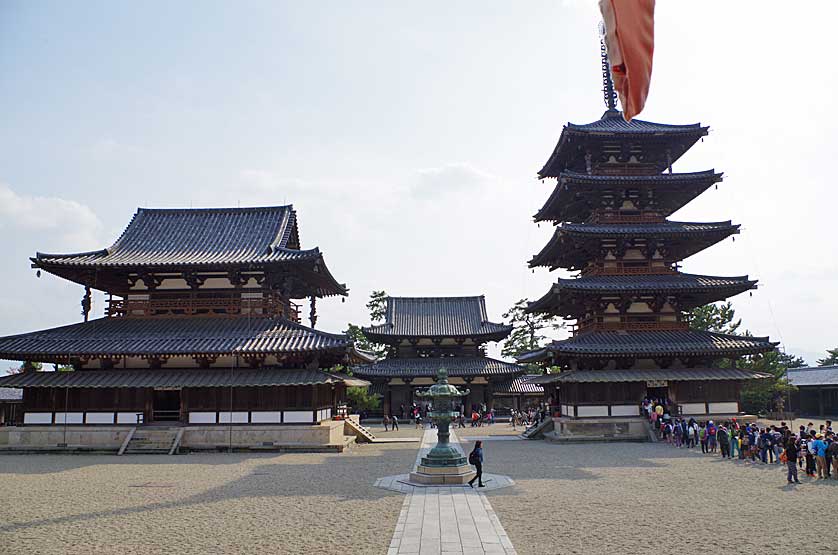
Prince Shotoku: The Temple's Influential Founder
No story of Horyuji is complete without celebrating its visionary founder, Prince Shotoku. A son of Emperor Yomei, Shotoku served as regent to Empress Suiko and is regarded as the "father of Japanese Buddhism". Beyond building Horyuji and other important temples, the prince was instrumental in spreading Buddhist teachings and culture in early Japan.
Prince Shotoku is also renowned for his political reforms and efforts to modernize the government based on Chinese and Korean models. His Seventeen-Article Constitution, written in 604 CE, outlined moral and ethical principles for officials and is considered Japan's first constitution. Shotoku's legacy and influence were so great that a popular cult arose around him after the 12th century, and he came to be regarded as a saint-like figure and even an incarnation of Buddha.
Horyuji's Treasures: Ancient Buddha Statues and Artwork
Within its halls and repositories, Horyuji houses an incredible collection of ancient Buddhist art - many of which are designated National Treasures. The Main Hall (Kondo) enshrines some of the temple's most precious and sacred statues, including the Shaka Triad. Cast in bronze in 623 CE, this massive statue depicting the historical Buddha flanked by two bodhisattvas is a rare masterpiece of Japan's oldest Buddhist sculpture.
Another must-see treasure is the Kudara Kannon, an elegant and slender wooden statue of the Bodhisattva of Compassion that showcases the strong Korean artistic influence during Horyuji's early days. The Eastern Precinct's Hall of Dreams (Yumedono) also houses important statues related to Prince Shotoku, including the mysterious Guze Kannon, which is said to be a life-size representation of the prince and was kept hidden for centuries.
The Temple's Cultural Significance and World Heritage Status
As one of the first Buddhist temples in Japan and the progenitor of the influential "Shotoku Style" of religious architecture, Horyuji is immensely significant to Japanese culture and history. Its well-preserved structures and artwork provide a rare window into the dawn of Buddhism in Japan and the Asuka Period when the nation was undergoing rapid cultural transformation. For its unique value as a "capsule of Buddhist art" from the 6th-7th centuries and its testimony to cultural exchange between Japan, China and Korea, Horyuji was designated as Japan's first UNESCO World Heritage Site in 1993. The temple continues to be an active site of worship and center of learning, carrying on Prince Shotoku's legacy.
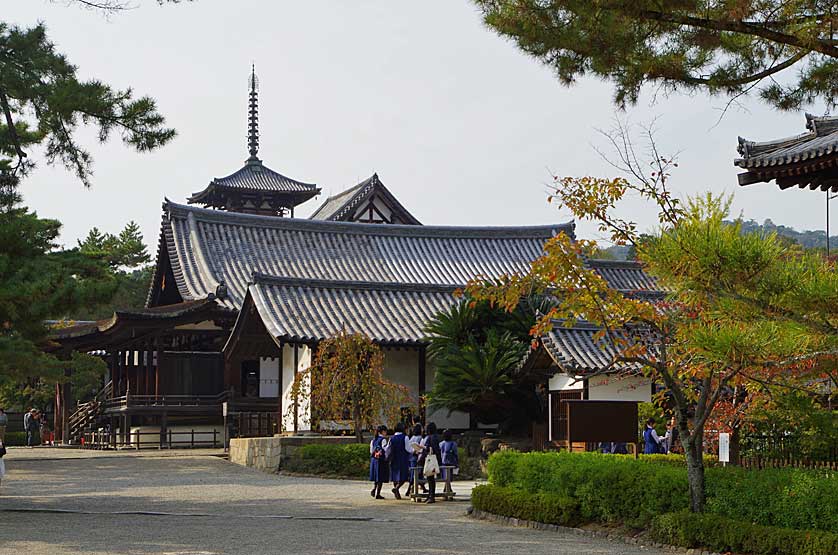
Visiting Horyuji: Access, Hours and Highlights
Horyuji Temple is located in Ikaruga Town, about a 30-40 minute train ride from central Nara. From Nara Station, take the bus or train to Horyuji Station, then walk about 20 minutes east or take a short bus ride to reach the temple. Alternatively, buses run directly from Nara to Kintetsu Nara Station and JR Nara Station to the "Horyuji-mae" bus stop near the temple grounds. The journey takes about 1 hour.
The temple is open daily from 8:00 to 17:00 (until 16:30 from October to March). A small entry fee of 1500 yen is charged, which includes admission to the Gallery of Temple Treasures and neighboring Chuguji Temple. With so much to explore, it's best to budget at least 2-3 hours for your visit. Must-see highlights include the Western Precinct's five-storied pagoda, Main Hall (Kondo), and Central Gate, the Hall of Dreams (Yumedono) in the Eastern Precinct, and the Kudara Kannon and Shaka Triad statues in the Gallery of Temple Treasures. For a comprehensive experience, consider hiring a local guide or joining a tour.
No trip to Nara is complete without witnessing the serene beauty and living history of Horyuji Temple. As Japan's oldest Buddhist sanctuary and home to the world's most ancient wooden architecture, Horyuji is a testament to the profound legacy of Prince Shotoku and the early flourishing of Buddhism in the island nation. Immerse yourself in its timeless atmosphere and discover the fascinating cultural heritage that has inspired the Japanese people for over 14 centuries.
Ready to embark on an unforgettable temple pilgrimage in the ancient capital? Horyuji awaits, inviting you to walk in the footsteps of royalty and experience the spiritual heart of early Japan. Don't forget to pick up some omamori charms as a sacred souvenir of your visit! And after exploring Horyuji, be sure to visit Todaiji and Kofukuji - two more of Nara's iconic temple treasures. Happy travels!
To dive deeper into Japanese history and culture, browse our selection of recommended books. And for breathtaking temple stays in traditional surroundings, check out these unforgettable shukubo experiencesacross Japan. See you next time as we continue to explore the wonders of the Land of the Rising Sun!
